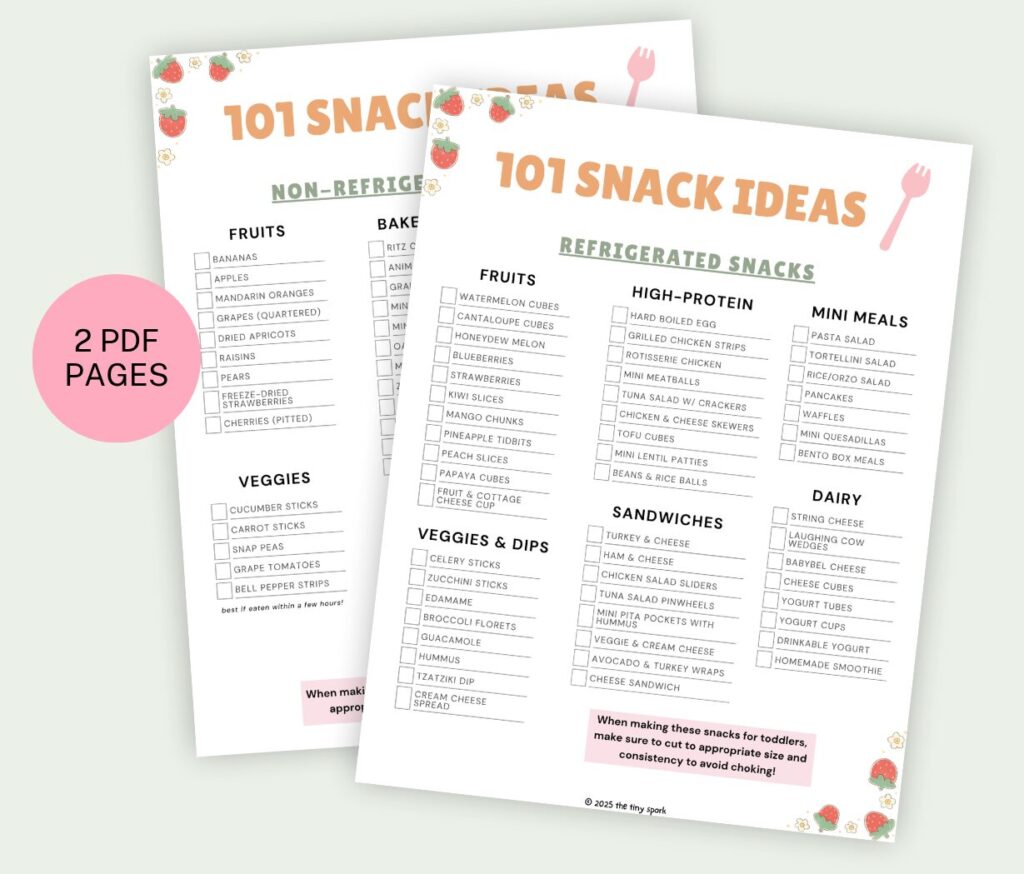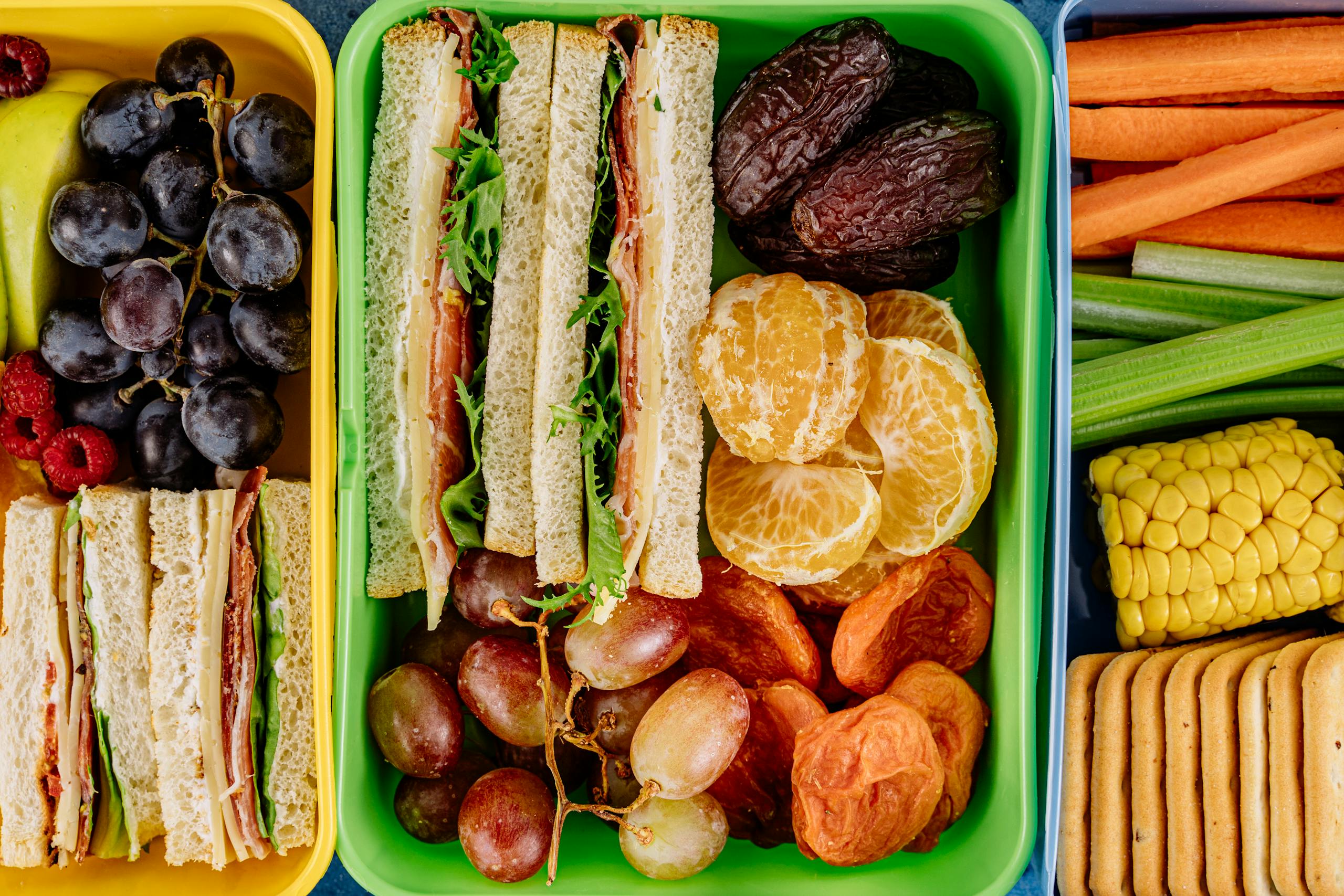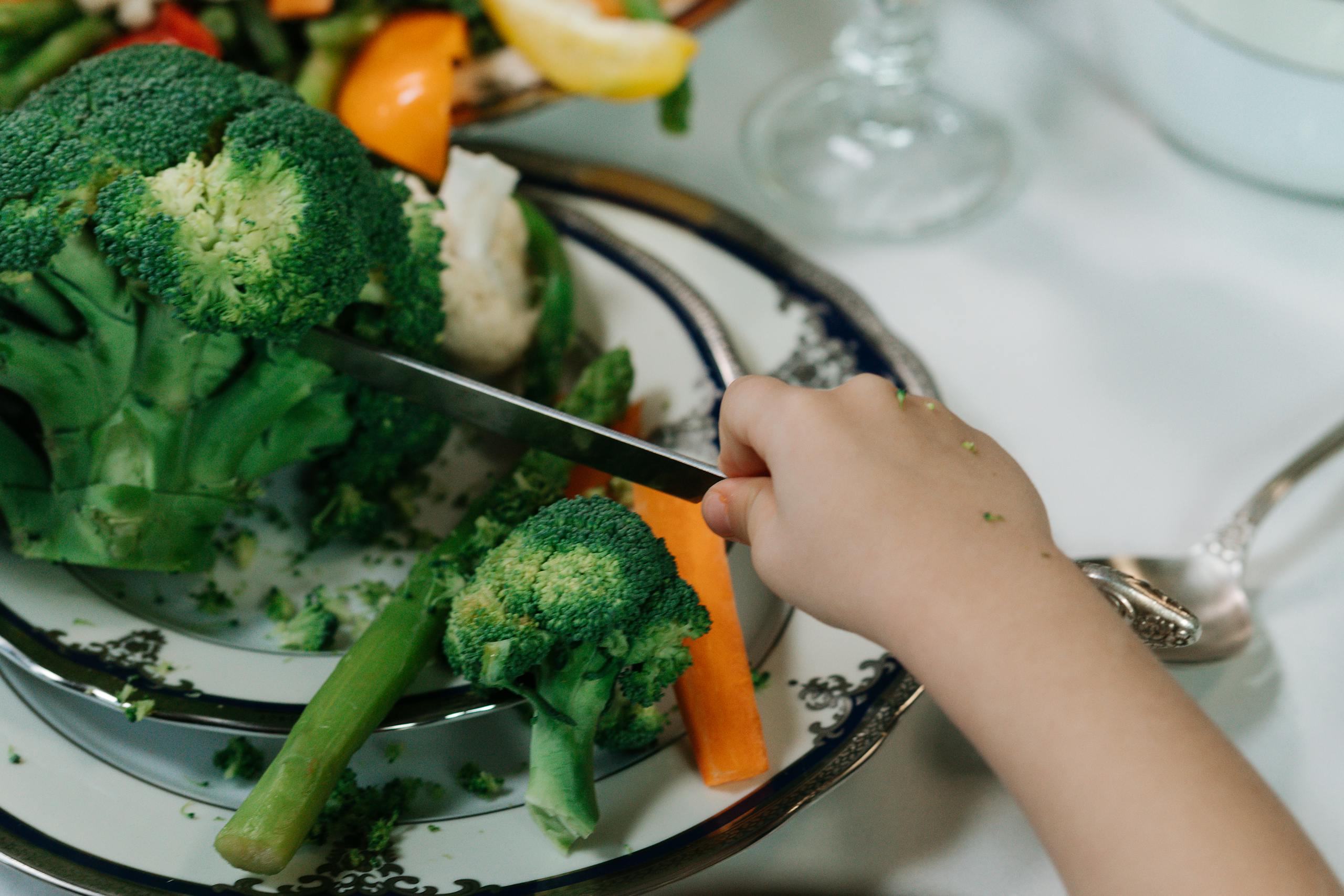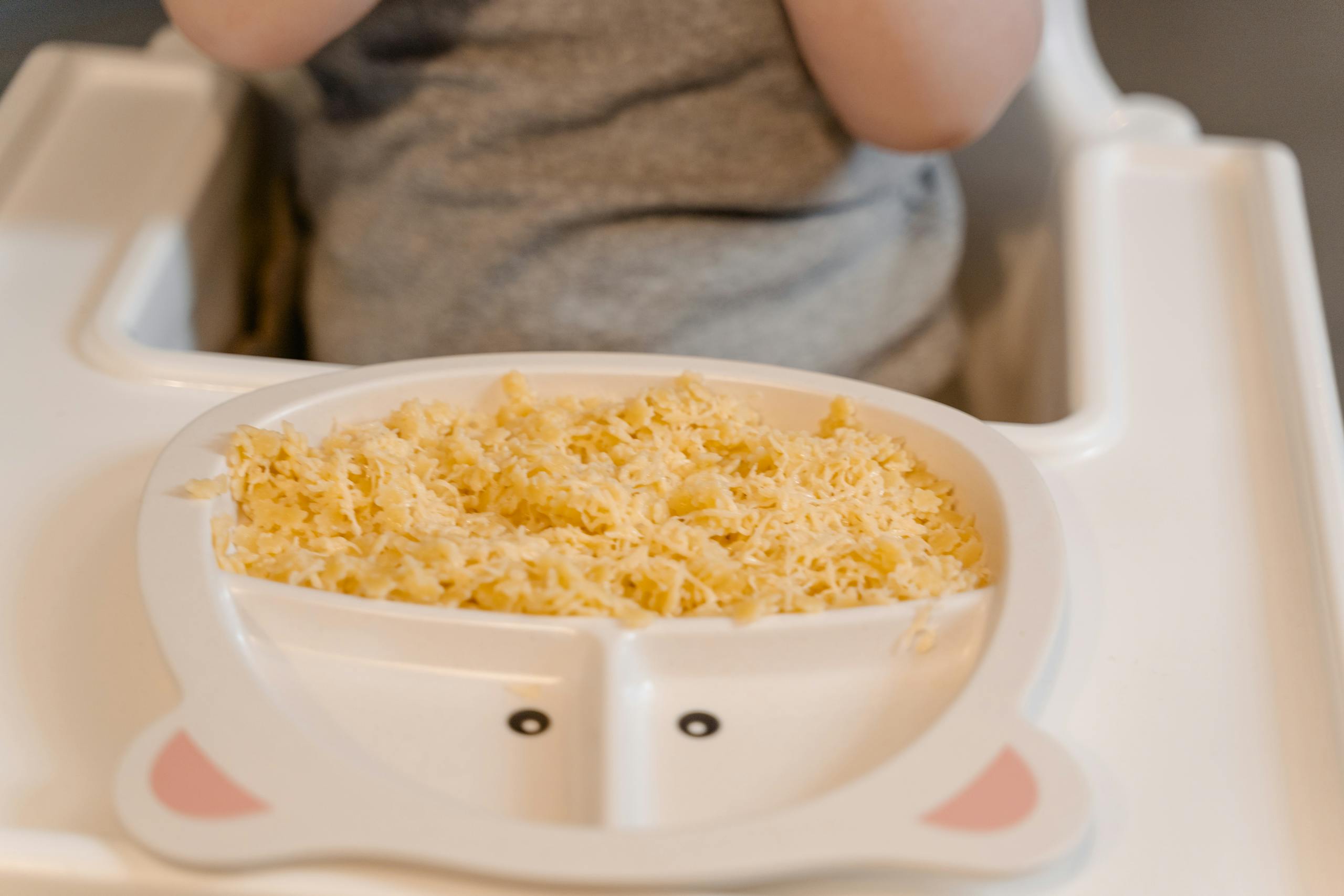What Exactly Is Baby-Led Weaning?: The Basics of BLW
This post features an introduction to baby-led weaning for parents learning how to feed their little ones. I talk about what baby-led weaning is, how to get started, what foods are perfect when starting baby-led weaning, and a few practical tips to keep in mind!

Disclaimer: The information provided in this blog post is for general informational purposes only and is not intended as medical advice. Always consult with your child’s pediatrician before making any changes to their diet or feeding approach, especially if you have concerns about nutrition, growth, or feeding difficulties. Read the full disclaimer here.
Starting solids is such an exciting milestone for you and your baby! But figuring out how to feed your baby can feel a bit overwhelming, and it’s one of the biggest questions I get asked as a pediatrician.
One method of infant feeding that’s gained a lot of popularity recently is baby-led weaning (BLW). In a nutshell, it’s a feeding method that encourages babies to feed themselves soft finger foods starting as young as 6 months of age.
It’s often compared to the traditional way of infant feeding where parents introduce purees via a spoon first, gradually transition to thicker textures, and then start finger foods around 8-9 months of age.
If you’re confused, don’t worry – I’m going to break it all down for you in this post!
Now, it’s important to note that at this time, there are not many scientific studies on baby led weaning. Pediatrician advice on this topic can also vary. To my knowledge, the American Academy of Pediatrics doesn’t have an official policy statement on this method of feeding although they do have this fantastic article that explains baby led weaning on their HealthyChildren website.
In this post, I’m going to be sharing some basics about baby-led weaning – what it is, foods to try, and some practical tips. Please note that I neither encourage or discourage families from baby-led weaning. I think it’s a decision you have to make based on your individual comfort level and after having a discussion with your pediatrician.
Ultimately, as a parent, you have to decide what is best for you and your baby. Some parents feel very uncomfortable at the thought of baby-led weaning and that’s okay! It’s perfectly fine to start off with spoon feeding if that’s what you’re comfortable with.
It’s also important to have a conversation with your child’s pediatrician, who can provide you with further guidance on whether your baby is ready to start solids and come up with a plan specific to your baby’s needs.
Alright with that out of the way, let’s talk about baby-led weaning!

Need snack ideas? 🍿
Sign up for my email list & I’ll send you a FREE printable list of 101 snack ideas!
Disclaimer: The information provided in this section is for general informational purposes only and is not intended as medical advice. Always consult with your own doctor or your child’s pediatrician before making any changes to your diet or your child’s diet/feeding approach. Read the full disclaimer here.
What Is Baby-Led Weaning?
So, what exactly is baby-led weaning?!
Let’s first discuss the traditional method of starting solids that many pediatricians talk about. The traditional method of starting solids recommends:
- Introducing thin purees around 4-6 months of age
- Gradually progressing to thicker purees as tolerated
- Introducing table foods and finger foods around 9 months of age
In the baby-led weaning model, infants are introduced to soft, appropriately-sized finger foods that they can grasp and eat by themselves as early as 6 months of age.
The important thing to note is that the food must be soft, easy to grasp, and cut into an appropriate size to prevent choking. If you need a visual example, check out the photo below!
So baby-led weaning you start finger foods as early as 6 months of age.
Traditional feeding you start purees first and wait until about 9 months of age to start finger foods.
The thought is that baby-led weaning can help improve a baby’s independence, support oral motor development, and expose babies to a wide variety of textures from a young age. Again, it’s important to note that there are not many scientific studies that have been done yet to confirm these hypotheses.
I hope this explanation makes sense. I know it can be a little confusing at first! Here’s an excellent Youtube video from BabyCenter that demonstrates baby-led weaning.
How Do I Start Baby-Led Weaning?
If you decide that you want to give baby-led weaning a try – here are some important things to keep in mind when you get started. I know I sound like a broken record, but make sure you discuss this with your baby’s pediatrician before getting started.
- Make sure your baby is ready to start solids. If you’re doing baby-led weaning, your baby must be at least 6 months of age. Make sure your pediatrician gives you the okay to start solids! In general, babies should have good head/neck control, be able to reach and grasp independently, be interested in food, and no longer have the tongue-thrust reflex. Read more about the readiness signs here.
- Set up a safe eating environment. Use a high chair that allows your baby to sit upright with good support. Avoid distractions (like TVs or tablets) and observe closely while they eat.
- Choose the right foods. I discuss this more below, but food must be very soft, easy-to-grasp, and cut into an appropriate size + shape. Good first foods include ripe banana spears, steamed broccoli florets, and roasted sweet potato sticks. For more guidance, or if you need a visual example, check out the photo below!
- Offer one or two foods at a time. Offer new foods one at a time, at least 2-3 days apart. Some sources say that this is outdated advice, but honestly I still recommend this to be on the safe side.
- Let your baby lead. Avoid putting food directly in their mouth. Place it on their tray or plate and let them grasp it themselves – with constant supervision. It’s important to remember that your baby likely won’t actually eat much of the food, which is okay! Most of it may end up on the floor, table, on their face, or all over their clothes! The primary goal is for them to try new textures and tastes. Breastmilk or formula is still the main source of nutrition at this age.
- Watch for gagging. Adult supervision is crucial whether you’re feeding purees, table foods, or finger foods. Gagging is part of the learning process on how to eat solids. Choking is rare when foods are properly prepared and supervision is consistent. However, it is extremely dangerous and something to monitor closely for.
Consider taking an infant CPR class before starting solids, just for peace of mind. If you want more information on choking vs. gagging, check out this amazing handout from Boston Children’s.

Need snack ideas? 🍿
Sign up for my email list & I’ll send you a FREE printable list of 101 snack ideas!
The Best First Foods for BLW

Examples of foods that are appropriately sized for baby-led weaning. Photo credit: Canva
When starting BLW, focus on these important rules when preparing foods:
- Must be very soft and mush up easily when you press on it
- Fruits should be very ripe
- Vegetables should be steamed, sautéed, or roasted until very soft
- Do NOT give raw vegetables under 18 months of age
- Cook pasta and meat for a little longer than normal to make it very tender
- Cut into strips, sticks, or wedges – like in the photos above
- Do NOT cut into cubes or bite-sized pieces until 9 months of age
- A good rule of thumb is to cut them to the size and width of your pinky
- Babies grasp with their whole hand/fist first, so make sure it’s easy for them to handle
Some great first foods include:
- Steamed or roasted sweet potato sticks
- Ripe avocado slices
- Ripe banana cut into spears or wedges
- Steamed broccoli “trees”
- Cooked, shredded chicken
Avoid foods that are choking hazards—like whole grapes, raw carrots, popcorn, nuts, hard candy, and hot dogs. For young infants 6-9 months of age, don’t give pieces of food that are too small since they could become choking hazards.
Practical Tips for Baby-Led Weaning
- Start when baby is well-rested and not overly hungry. A calm, happy baby is more likely to explore new foods. Try offering solids in between feeds or at least 1 hour after.
- Embrace the mess. BLW is messy—and that’s a good thing! It means your baby is exploring new textures and learning to eat. A splat mat under the high chair can help make cleanups easy.
- Don’t pressure. Keep the mood light and positive! Eating solids at this age is more about the process rather than how much they eat.
- Use safe food shapes and textures. Offer foods that are soft enough to mash between your fingers and cut into finger-sized sticks or shapes that are easy to grasp. If you need a visual example, check out the photo above!
- Stay close and supervise. Always sit with your baby during meals and watch them closely. Make sure they don’t stuff too much in their mouth, or accidentally bite off a very large piece!
Do I Have to Do Only BLW?
Not at all! Many families choose a “combo” approach that includes some self-feeding and some spoon-feeding with purees. The right feeding method is the one that works best for your baby and your family. BLW doesn’t have to be all-or-nothing, and it’s totally fine to adapt it as you go.
Also, if baby-led weaning scares you and you don’t feel comfortable doing it, it’s okay! It is absolutely fine to skip baby-led weaning and start with purees first then gradually work your way up to table foods and finger foods.
The goal is for your child to eat a wide array of table foods and finger foods by 12 months of age, and they will get there whether you stick to traditional feeding or do baby-led weaning.
There is no single, perfect, best way to feed your baby. The most important part is that you enjoy this special time with your little one! 🙂
I hope you enjoyed this post on baby-led weaning, and got a little better understanding of what it is. If you want more information on starting solids for your infant, check out my Starting Solids 101 post here! Happy feeding!





